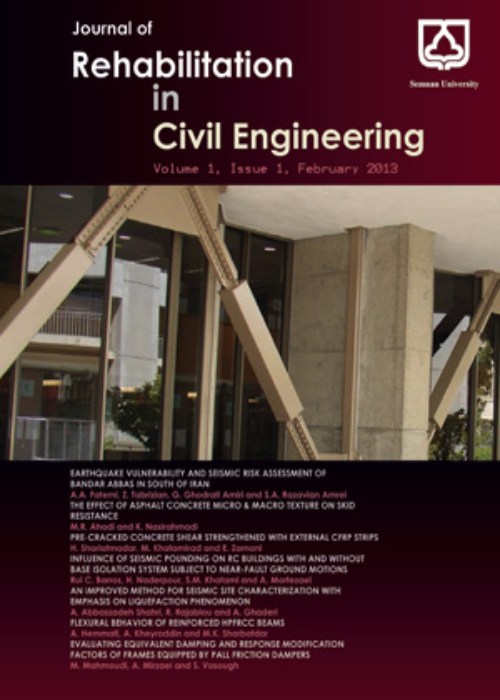Cross Section Effects on Convergence-Confinement Method in Multi Stage Tunnel Excavation
Dimensionless coefficient (l) in convergence confinement method indicates the relaxation of stress in the wall of the tunnel at different excavation movements. This factor is contemplated a constant number in previous studies and tunnel geometric characteristics (such as depth, cross-section shape, radius, soil material, etc.) are not included in its determination; however, ignoring these effects can cause significant errors in the analysis of tunnels. In this article, the effect of excavation pattern and tunnel cross section shape on stress reduction factor is investigated. For this purpose, at first, by considering the conventional cross sections of the tunnel (circular, horseshoe, and double arch), applying finite difference numerical simulation software FLAC 2D and FLAC 3D, the type of excavation (full face and multi face) was inspected in estimating the stress reduction factor by considering depth, radius, and dissimilar points around the tunnel. At last, studies were carried out between the 2D and 3D analyses and the experiments conducted at Karaj Subway to verify the results obtained from the above 2D analyses. The results of this study indicate the significant effect of radius, depth, point position around tunnel cross-section and its shape on stress reduction factor. Convergence around tunnel variation was observed about 21 percent in horseshoe tunnel. However, the maximum and minimum convergence value was in circle and double arch respectively in a constant radius and depth. The results illustrate the variety percentage error in tunnel wall about 27, 10 and 7 percent for circle, double arch and horseshoe respectively. Nonetheless, percentage error was decreased by increasing the tunnel radius. Applying variable stress reduction factor in the all-around of tunnel cross section can lead to more realistic simulations of complex behavior of tunnels during the excavation. Moreover, this method can be utilized for the analysis and design of tunnel due to its time saving nature and at the same time sufficient accuracy.
- حق عضویت دریافتی صرف حمایت از نشریات عضو و نگهداری، تکمیل و توسعه مگیران میشود.
- پرداخت حق اشتراک و دانلود مقالات اجازه بازنشر آن در سایر رسانههای چاپی و دیجیتال را به کاربر نمیدهد.



